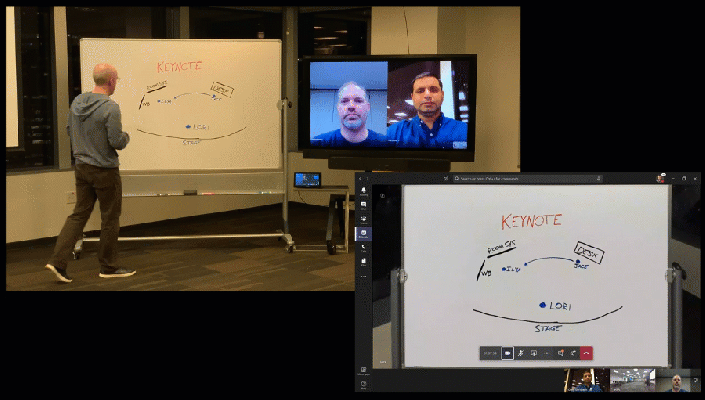Microsoft Teams, the collaboration platform that Microsoft built to complement its Office 365 suite of productivity apps for workers — which also ensures a way of keeping those workers staying within its own ecosystem — is hitting a milestone on its second birthday.
Today, the company announced that over 500,000 organizations are now using Teams. The company is not spelling out what that works out to in total users but notes that 150 of them have more than 10,000 users apiece, putting its total user numbers well over 1.5 million.
Alongside this, Microsoft also announced a number of new features that will be coming to Teams as it works on native integrations of more of Microsoft’s own tools to give Teams more functionality and more relevance for a wider range of use cases.
“The rigid hierarchy of the workplace has evolved, and environments are now about inclusivity and transparency,” said Lori Wright, General Manager of Workplace Collaboration at Microsoft, in an interview. “We see these trends playing out all over the world, and this is giving rise to new forms of technology.”
The new features indeed speak to that trend of inclusivity and making platforms more personalised to users. They include customized backgrounds; and support for cameras to capture content to bring in new ways of interacting in Teams beyond text — something that will be further explored with the eventual integration Microsoft Whiteboard, for people to create and ingest presentations that are hand-written into the system.
For those who are either hearing-impaired or cannot use or hear the audio, Microsoft’s adding live captions. And to speak to the purview of CSOs, it’s adding secure channels for private chats as well as “information barriers” that can be put in place for compliance purposes and to make sure that any potential conflicts of interest between channels are kept out; screening for data-loss prevention to prevent sensitive information from being shared.
Finally, it is adding live events support, which will let users create broadcasts on Teams for up to 10,000 people (who do not need to be registered Teams users to attend).
All in all, this is a significant list of product updates. The company kicked off its service as very much a Slack-style product for “knowledge workers” but has since emphasized a more inclusive approach, for all kinds of employees, from front line to back-office.
No updates today to the number of third-party applications that are being incorporated into Teams — an area where Slack has particularly excelled — but Microsoft is focused on making sure that as many users as it has already captured in Office 365, which today number 155 million — eventually also turn on to Teams. “We using as many as the Microsoft services as we can, tapping the Microsoft Graph to feed in services and structure information,” Wright said.
Microsoft is somewhat of a late comer to the collaboration space, coming in the wake of a number of other efforts, but these user figures put the company’s effort well within striking distance of notable, and large, competitors. Last month, Facebook noted that Workplace, its own Slack rival, had 2 million users, also with 150 organizations with more than 10,000 users each included in the number. Slack, meanwhile, in January said it had over 10 million daily active users with the number of organizations on the platform at 85,000.
(Notably, just yesterday Slack made a timely announcement in its bid to court more large enterprises: they will now give regulated customers access to their encrypted keys, an important component to win more business in those sectors.)
